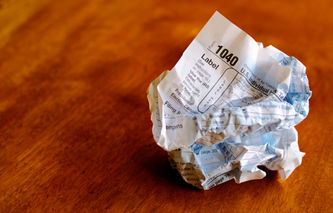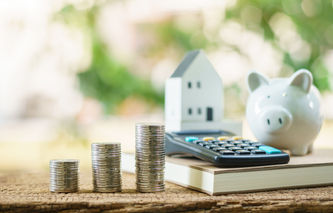For many homeowners, property taxes represent a large proportion of their monthly mortgage payment. While politicians like to talk about lowering property taxes, in most towns across the nation, this tax increases nearly every year.
Property Taxes and Essential Services
The same businesses and homeowners that dislike the notion of paying higher taxes also value the services this money provides to their companies and communities. In this article, we're going to take a quick look at the types of services this money pays for each year. We'll also explain how these taxes are calculated, and what a typical property tax bill might look like.
State and Local Income and Expenses
Additional Resources |
One of the services the U.S. Census Bureau provides is a clear picture of where state and local governments receive their revenues, and how that money is spent. The following two tables outline the average sources of income and expenses for state and local governments.
Sources of State and Local Income
The following list shows the various sources of local and state revenues, which are then used to provide essential services to their citizens:
Real Estate / Property Taxes 31.3%
Gross Receipts (Tax on Utilities) / General Sales Tax 23.3%
Individual Income Taxes 21.6%
Motor / Fuel Sales Tax 2.9%
Corporate Income Taxes 3.7%
Motor Vehicle Licenses 1.7%
Tobacco Sales Tax 1.2%
Alcoholic Beverages 0.5%
All Other 12.6%
Note: This data is based on information gathered by the Census Bureau for the third quarter of 2014.
State and Local Expenses
This second list shows the various expenses incurred by state and local governments. These are the essential services provided:
Education 27.7%
Public Welfare 16.6%
Insurance Trusts 9.9%
Utilities 6.7%
Highways 5.0%
Hospitals 5.1%
Other 39.0%
Source: U.S. Census Bureau, 2014 Annual Surveys of State and Local Government Finances.
From the above two tables, it's clear that property taxes, or real estate taxes, are the single largest source of funding for state and local governments, and most of the money pays for education, social programs, and public safety.
Property Tax Calculations
Property tax is what is termed an ad valorem tax. That's a fancy way of saying the tax is based on the value of the property itself. For example, two homeowners in the same township with homes of equal value should pay the same amount of property tax each year.
Using the same logic, someone owning more valuable property would pay more taxes. This tax is based on property value, not how much someone earns or spends each year. That's one of the big differences between property, sales and income taxes.
Property Tax Formula
The basic calculation is very much the same across the country, and takes the following form:
Taxable Value x Tax or Levy Rate = Annual Property Tax Bill
Taxable Value
The taxable value for a typical home would include the land and the structure, or home. This is also referred to as the land and improvements. At times, the value of the improvement (or home) is depreciated or stated at a specific point in time (original cost). Land is never depreciated.
This original cost or depreciation concept means that a brand new home selling for $300,000 may owe more property taxes than an older home that has the same market value. The rationale is that the home is new, and therefore has more value than the older home, even though the market price might be the same.
Tax or Levy Rate
The challenge for a township is making sure they collect enough property taxes to pay for the services they provide in a given year. The tax collector would first take a look at the township's total approved expenditures for a calendar year. Next, they would add up all of the taxable values for the properties in their township. With these two pieces of information, a proposed Tax or Levy Rate can be calculated:
Tax or Levy Rate = Total Township Expenditures / Total Taxable Value
When examining the formula, it becomes evident that comparing the levy rate from town to town is meaningless. That's because each town might determine their Total Taxable Value in a slightly different manner, thereby changing the required tax rate.
Reassessments
Many taxpayers are confused, and concerned, when it comes to tax reassessments. They are unsure if their property taxes are going to increase or decrease, and they're confused over what happens to the tax rate.
During a reassessment, the town's tax collector, or tax assessment agency, reevaluates the value of all properties in the township. In most situations, homes are valued at or near their true market value. This new valuation normally increases the town's total taxable value.
If someone owns a relatively old home, their assessed value would tend to move higher than a newer home that might be assessed closer to its market value. There are three elements that help to explain why this happens during a reassessment:
The tax rate formula itself
There is normally an increase in Total Taxable Value (the denominator)
Older homes will be currently assessed at values that are further from their true market value than newer homes
These three pieces of information can help us draw some conclusions as to what happens during a reassessment.
Reassessment Rules
The following generalizations can be made when trying to figure out the impact of a reassessment on an individual homeowner:
If a reassessment results in a larger Total Taxable Value (or base) for a township, then the Tax or Levy Rate would also decrease.
Property taxes will increase for older homes that are assessed at values further from their true market value, and consequently reassessed at values closer to true market value.
Property taxes will decrease for newer homes that are already assessed closer to market value.
In general, homeowners with older homes tend to be the "losers" during a reassessment; paying a larger share of property taxes. Homeowners with newer homes tend to be the "winners" during a reassessment; paying a smaller share of the town's real estate tax bill. The above example assumes there is no need to collect more taxes, only reassess who pays what share.
Annual Property Tax Bills
Most municipalities like to show its residents where their property taxes are going, and what better place to show this information then on the tax bill? We're going to explain what someone would likely find on a typical tax bill. What actually appears on a bill will vary from town to town. Generally, the bill is broken down into two or three sections: expenses, taxable value, and total bill.
Property Tax Bill Expenses
The first item most property tax bills will outline is how the money is allocated to various services. This means property owners will see their share of the township's expenses. This will include money paid to the state, local schools, county government, fire, police, library, sewer, and water (if included in property taxes).
This is usually stated as the property owner's share of these expenses, and might look something like:
Example Property Tax Expenses
State School Support | 750 |
Local School Support | 1,100 |
County Government | 400 |
City Government | 350 |
Police | 100 |
Fire | 100 |
Other | 200 |
Total Current Expenses | 3,000 |
Total Value
The next calculation usually performed is the determination of taxable value. This is where some property owners take exception to their tax bill. They disagree with the taxable or assessed value. An example of this section might look like the following:
Assessed Property Value Example
Land Value | 75,000 |
Improvements | 125,000 |
Exempt Value | 0 |
Taxable Value | 200,000 |
Total Bill
The final step shown will be the reconciliation of the expenses to the tax bill. This means the Taxable Value is multiplied by the Tax or Levy Rate to equal the money owed in the coming year. There may be other adjustments or a credit to the bill, but the rule is basically the same: income must equal expense for the township.
Example Property Tax Bill
Taxable Value | 200,000 |
Levy Rate | 0.015 |
General Property Tax | 3,000 |
Tax Adjustments | 0 |
Total Property Tax Bill | 3,000 |
The fact the property tax bill is exactly equal to the current expense is no accident. The factor called the levy tax rate made sure the two sides of this equation are equal.
About the Author - Property Taxes Explained

.jpg)


